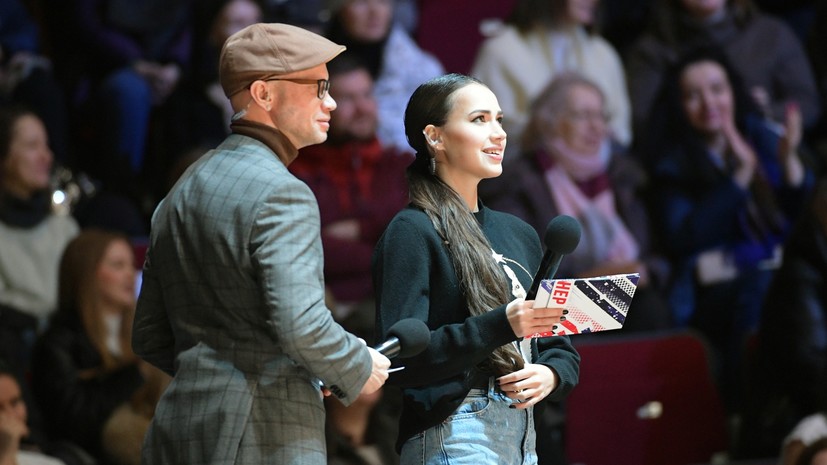The jumping championship in St. Petersburg is the best thing that has happened to domestic figure skating over the past many months.
Perhaps for the first time, we all saw how exciting a sporting event can be when it brings together all the best at once.
It is pointless to compare the tournament with the previous two - the conditions were too different.
The competition two years ago in the full sense of the word turned out to be the very “pancake” that came out lumpy, in March of this year there were no spectators again in Saransk, the general moral background left much to be desired, plus almost everyone who participated was not in the best shape.
Accordingly, the amount of "marriage" in the jumps was bewildering: they say, well, why demonstrate all this?
In St. Petersburg, it was the quality that struck, and not so much women's jumps as men's and those elements that sports couples demonstrated in the team part of the competition.
In fact, it was an opportunity to look into the internal coaching kitchens.
To see something that is not yet presented to the general public at ordinary figure skating competitions, but is almost ready for a wide display.
Like a debut film premiere, with the only difference being that in the finished film you are unlikely to fix anything, but here you can make adjustments, improving the format and presentation, ad infinitum.
Do these adjustments need to be made?
In my opinion, yes.
As a spectator, I lacked clearly defined rules and a somewhat complicated task for those who competed in an individual tournament.
Eliminate the possibility that a figure skater who owns only one quadruple, even the most difficult one, could win - and this is exactly what we saw in the performance of the champion Grigory Fedorov.
Over the course of two days of the tournament (Grigory was selected for the personal Sunday final through preliminary Saturday starts), the skater performed the same jump ten times (!!!) - a quadruple lutz.
And with a laugh, but very aptly, he commented on his own victory: “The idea is generally a topper - lutz jump and that’s it.”
It so happened that the day before the competition I talked in Moscow with Mark Kondratyuk, who had just been discharged from the hospital, where he was recovering from a back injury.
Mark predictably couldn’t go to St. Petersburg to compete, but he noticed: they say, he didn’t read the rules too much, but if he participated in the tournament, he would declare two different solo jumps.
“Most likely – quadruple lutz and salchow.
Lutz - in order to score the maximum possible number of points, and salchow - for the sake of stability.
And I would definitely try to make the very cascade that brought victory in the jumping tournament in Saransk - from two quadruple salchows through an oiler, ”the figure skater explained.
For that unique cascade, Kondratyuk received an absolutely breathtaking 22.42 points.
In St. Petersburg, such impressions were lacking, although a special prize for the variety and quality of jumps should have been given to Peter Gumennik, who rattled both the team and individual tournaments.
Was it worth diluting these two competitions by day?
I also think so.
This would make it possible to strengthen the lineups of participants, increase the number of attempts, and make the format more intriguing.
For example, stretch the final series of jumps up to five and hold it according to the principle of penalties - not for the amount of points, but according to the principle “left - did not leave”.
Perhaps it was worth adding and displaying infographics on the screen that would allow you to compare the height of the jump, the span, the speed of entry, the speed of rotation in the air.
Still, such tournaments are also a show, and this implies the maximum involvement of not only athletes, but also spectators in the process.
The event conference is a separate issue.
The draw of the tournament, which could have become a separate and very bright show, turned out to be a failure in terms of presentation, despite the fact that in addition to its own presenters - Olympic champions Alina Zagitova and Maxim Trankov - the screenwriter of "Evening Urgant" Konstantin Anisimov was involved in the process.
Yes, and the actor and comedian Dmitry Khrustalev, paired with the Olympic champion Pyeongchang, felt not quite at ease during the competition.
Although we must pay tribute: Dmitry strongly insured Alina, picking up some phrases and filling in sudden pauses.
Perhaps the reason for the dissonance of the sports part of the tournament and its verbal accompaniment lay in the fact that the invited show stars themselves are used to acting as people around whom their small television world revolves.
Here they ended up on the "dance" with real world-class stars.
And they did not stand the comparison, which, let's be honest, it would be difficult for any average presenter to withstand.
Actually, just the ability to match your heroes, while being a showman, at one time made Dmitry Guberniev the country's main commentator.
To be able to brilliantly present someone else's achievement, but at the same time lead your own solo part, is a great art.
Nothing less simple than getting on the ice and performing a cascade of quadruple jumps.
Someone will surely say: they say, why find fault with the tournament, which, with all its shortcomings, has become a grandiose event in a country isolated from the world?
Perhaps, just then, what exactly the jumping tournament showed: in figure skating, Russia currently has the most powerful potential and the brightest stars.
And they certainly deserve to be served to the public in full splendor.

